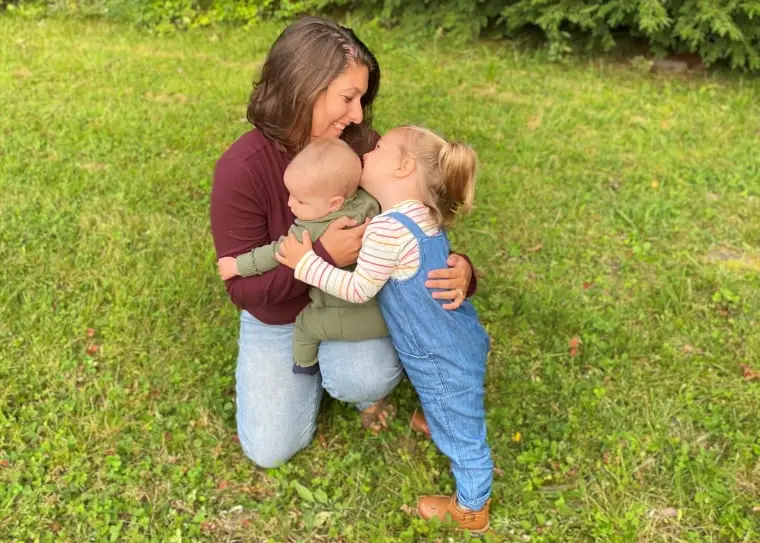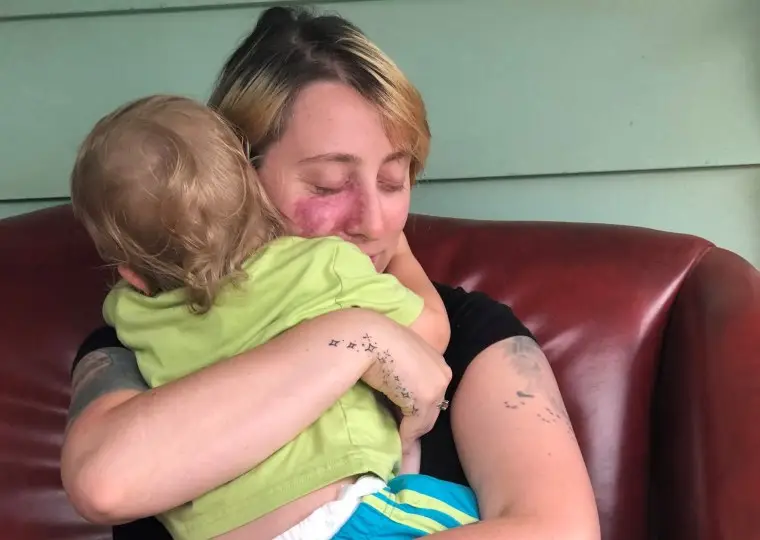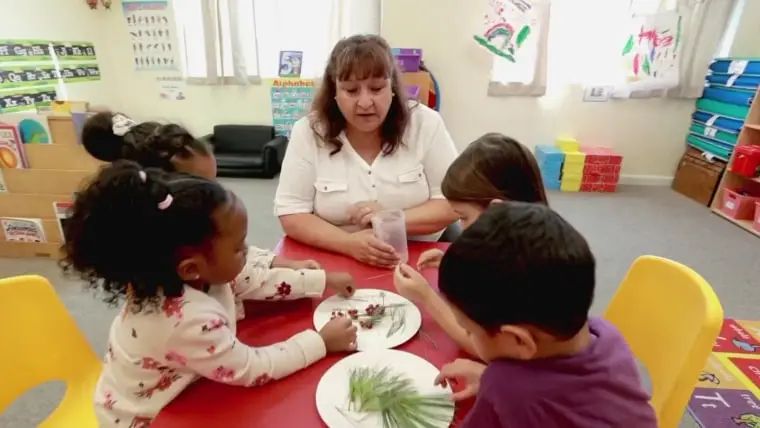
The end of federal child care funding means parents leaving work and day cares shuttering
While government subsidies allowed Jordyn Rossignol to keep her child care center in northern Maine afloat during the pandemic, she finally made the wrenching decision in August to shutter because of rising operational costs.
That federal aid, which may not have fixed the industry but served as a critical lifeline, is set to expire at the end of this month, putting other day care providers across the U.S. in jeopardy in what industry advocates are calling a "child care cliff."
Rossignol, 35, envisions an even more dire scenario.
"It's going to be a child care apocalypse," she said. "If someone came to me today and said they wanted to open up a child care center, I'd say, 'Don't do it.' I was in debt, and my health was suffering."
"I couldn't keep staff because of pay," she added of the federal money, amounting to about $12,000 a month, that still left her struggling as she wrestled with payroll and food and training compliance costs. "I lost my best teacher to go work across the street at a hardware store."

A Century Foundation report in June estimated that over 70,000 child care programs, or about one-third of those that relied on funding from the $1.9 trillion American Rescue Plan Act passed in March 2021, could close. That amounts to about 3.2 million children losing child care.
The potential loss of child care providers would have a profound impact on working parents, with women shouldering the worst of it, but labor and economic experts warn the ripple effect will be far-reaching in ways that those who don't have young children should be just as concerned about.
"Our economy is strong. We have a strong labor market, and there has been a decent amount of recovery in terms of our job growth," said Julie Kashen, the director of women's economic justice and a senior fellow at The Century Foundation, a nonpartisan progressive think tank.
"But if parents lose their child care, they will have to cut their work hours or leave their jobs altogether," Kashen said. "Fewer people in the workforce means fewer people spending money — and the economy will feel it."
Parents and day cares express growing concerns as end of federal child care funding looms
Sept. 17, 202302:09To stem losses, Kashen said a handful of states, such as Alaska, California, Minnesota and New York, have attempted to steer millions of dollars to benefit child care providers who counted on the federal funding to pay for staff, buy supplies and reduce tuition costs for families.
In some states, the crisis is deepening. In June, the GOP-controlled Legislature in Wisconsin voted to end its Child Care Counts subsidy program, with funding to help child care providers expected to be exhausted by February. Some Republican and Democratic lawmakers, however, are proposing alternate solutions.
On the federal level, Democratic members of Congress have introduced bills this year to expand federal subsidies for child care providers and create federally funded, but locally run, child care centers. Republicans have resisted continuing the pandemic-era funding, initially meant to be just temporary relief.
"At this point, everything is caught up in the government shutdown issue," Kashen said. "If this Congress can act on this before the end of the year, it will make a huge difference."
The effects of the loss of funding may not be seen immediately, she added, but will come in waves over the next year as child care centers grapple with whether they can keep operating.
As more centers close and those that remain open only increase already-long waitlists for limited spots, some families will have to decide whether one parent will need to stay home to care for their children, said Cathy Creighton, the director of Cornell University's School of Industrial and Labor Relations Buffalo Co-Lab, who has studied child care costs.
Often, it falls on the mother to leave her job, Creighton said, putting women at a disadvantage in career advancement, widening gender pay disparities, and affecting their personal income and future benefits.
"This just exacerbates already existing inequalities," she added.
Jade Lebel, a Maine mother of a 2 ½-year-old and a 6-month-old, decided she won't return to her job as a teacher after realizing day care would cost a staggering $29,000 a year for her two children.
Instead, the family will rely on her husband's income as an engineer. Yet, she worries about the sudden loss from the years she built accruing retirement benefits.
"I have seven years' experience in my profession, and I have a really well-established job and the thing is, we still wouldn't be able to afford child care," Lebel, 29, said.

Employers in female-dominated industries currently struggling with labor shortages, such as education and nursing, are going to feel the strain, economists say. And while that may force some employers to offer better wages, they may also pass higher costs along to consumers.
Employees could see an impact on the workplace, as well, as their bosses struggle with filling positions and call on them to pick up more shifts or handle additional responsibilities — which, in turn, may contribute to worker burnout.
"Child care has been put on the back of parents, but it's a broken market," Creighton said. "It's not a market that can bear the cost. You can't say only if you're wealthy can you send your children to day care. It's not a good model for a democratic society."
And as the average retirement age in the U.S. only increases, millennial parents can no longer count on their parents to fill a child care role as in previous generations.
"You used to be able to have grandma help today and a neighbor tomorrow," Kashen said. "Now, your village has shrunk."
That has some families scrambling to find solutions.

Kat Brockschmidt, who works for a youth program nonprofit in upstate New York, said local day care centers have extremely long waitlists, so she and her partner are considering paying another stay-at-home mom to watch their almost 2-year-old while they work.
To quit her job, she said, is out of the question.
"It's wild to me," Brockschmidt, 32, said. "People go out of their way to say I should have been putting my kid on a waitlist before I knew I was pregnant."
Anila Rawasia, a mother of two from Montgomery County, Maryland, said she was floored by the long waitlists for child care centers in her area, but now she's lucky to have found a hybrid job where she can work from home as a recruitment specialist and also has her mother to help care for her 2-year-old son when needed.

She said continued government funding of child care providers is necessary, but hopes companies and employers can step up with their own creative solutions for helping parents, whether it's through on-site day cares, subsidizing child care costs or work-from-home flexibility.
Source: https://www.nbcnews.com/news/us-news/child-care-cliff-federal-funding-subsidies-end-rcna117405







